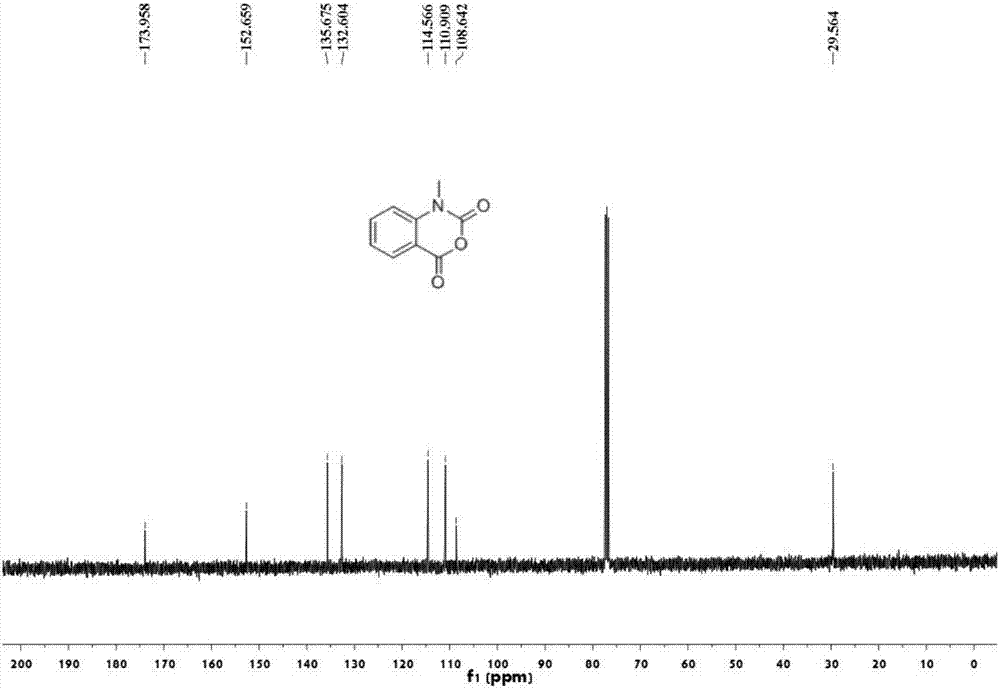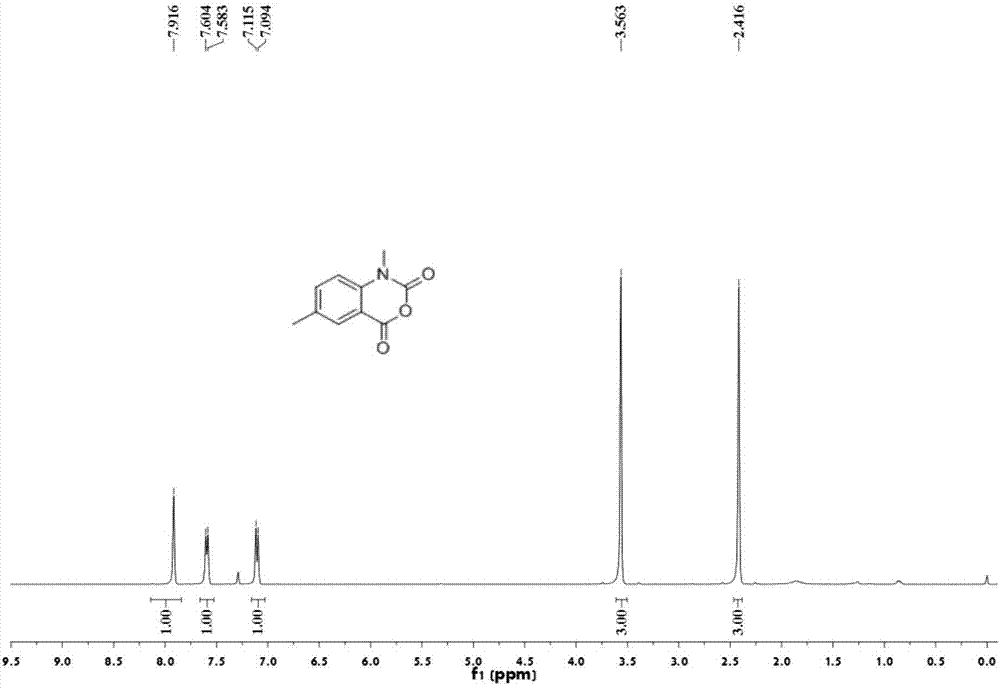Synthesis method of constructing isatoic anhydride and isatoic anhydride derivative by one step by utilizing carbonylation reaction
A technology of carbonylation reaction and isatoic anhydride, which is applied in the field of medicinal chemistry, can solve the problems of environmental friendliness, personal safety and production equipment damage, and achieve the effect of high step economy, efficient and convenient synthesis means, simple and safe operation
- Summary
- Abstract
- Description
- Claims
- Application Information
AI Technical Summary
Problems solved by technology
Method used
Image
Examples
Embodiment 1
[0034] Add 0.2 mmol of N,N-dimethylaniline, 0.01 mmol of palladium chloride, 0.2 mmol of copper acetate into a 25 mL test tube, add toluene (PhMe) and N,N-dimethylformamide (DMF)3 mL as a mixed solvent with a volume ratio of 10:1, put a balloon containing carbon monoxide and oxygen as a carbonyl source, and stir at 100 degrees Celsius. TLC (Thin Layer Chromatography) Detection After the reaction, the reaction solution was cooled to room temperature, the balloon was removed, and the unreacted carbon monoxide and oxygen were slowly vented. The reaction solution was filtered, and the filtrate was rotary evaporated under reduced pressure to remove the solvent, and then separated and purified by column chromatography to obtain the target product with a yield of 27%.
Embodiment 2
[0036] In a 25mL test tube, add 0.2 mmol of N,N-dimethylaniline, 0.01 mmol of bistriphenylphosphine palladium dichloride, 0.2 mmol of copper acetate, add toluene (PhMe) and N,N-dimethyl 3 ml of formamide (DMF) was used as a mixed solvent with a volume ratio of 10:1, covered with a balloon containing carbon monoxide and oxygen as a carbonyl source, and stirred at 100 degrees Celsius. After the TLC (thin layer chromatography) detection reaction, the reaction solution was cooled to room temperature, the balloon was removed, and the unreacted carbon monoxide and oxygen were slowly vented. The reaction solution was filtered, and the filtrate was rotary evaporated under reduced pressure to remove the solvent, and then separated and purified by column chromatography to obtain the target product with a yield of 49%.
Embodiment 3
[0038] Add 0.2 mmol of N,N-dimethylaniline, 0.01 mmol of palladium dichlorodiacetonitrile, 0.2 mmol of copper acetate, add toluene (PhMe) and N,N-dimethylformamide (DMF ) 3 ml as a mixed solvent with a volume ratio of 10:1, put on a balloon containing carbon monoxide and oxygen as a carbonyl source, and stir at 100 degrees Celsius. After the TLC (thin layer chromatography) detection reaction, the reaction solution was cooled to room temperature, the balloon was removed, and the unreacted carbon monoxide and oxygen were slowly vented. The reaction solution was filtered, and the filtrate was rotary evaporated under reduced pressure to remove the solvent, and then separated and purified by column chromatography to obtain the target product with a yield of 68%.
PUM
 Login to View More
Login to View More Abstract
Description
Claims
Application Information
 Login to View More
Login to View More - R&D Engineer
- R&D Manager
- IP Professional
- Industry Leading Data Capabilities
- Powerful AI technology
- Patent DNA Extraction
Browse by: Latest US Patents, China's latest patents, Technical Efficacy Thesaurus, Application Domain, Technology Topic, Popular Technical Reports.
© 2024 PatSnap. All rights reserved.Legal|Privacy policy|Modern Slavery Act Transparency Statement|Sitemap|About US| Contact US: help@patsnap.com










